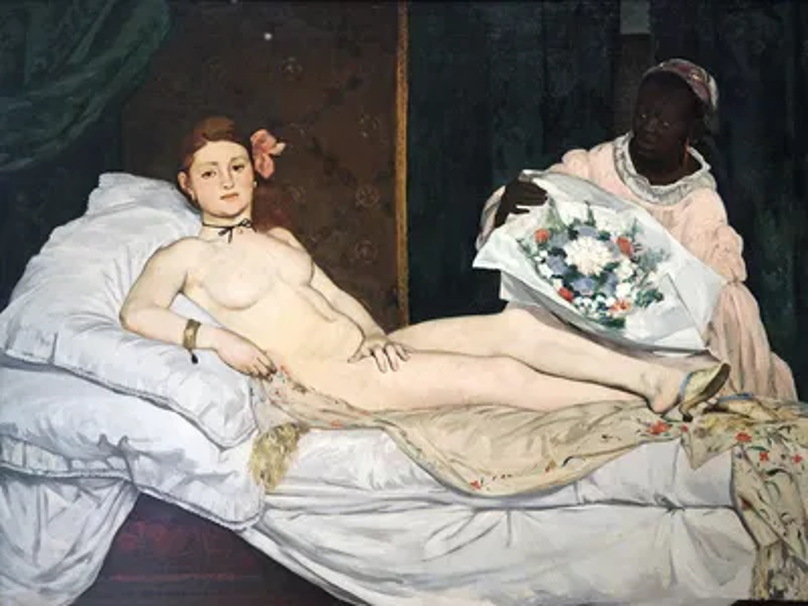Lecture 1: What is Art History? Taking Stock of an Ever-Expanding Field
1/5
There's no tags or description
Looks like no tags are added yet.
Name | Mastery | Learn | Test | Matching | Spaced |
|---|
No study sessions yet.
6 Terms
Ernst Gombrich, ‘Introduction’, The Story of Art (1950)
Historical Context & Main Arguments
Historical context
First published right after WW2
Consolatory/humanist project?
European civilisation has a glorious history & is continuing rather than perishing
Influential: many famous art history textbooks still use a similar narrative structure
Main arguments
There are no wrong reasons for liking an artwork, but there ARE wrong reasons for disliking an artwork (e.g. habit/prejudice)
The value of a picture does NOT solely lie in aesthetic/realistic beauty
The mystery of the artist genius
‘Poor artists did not achieve anything when trying to follow laws of art, YET great masters could break them and yet achieve a novel kind of harmony/beauty’
Ernst Gombrich, ‘Introduction’, The Story of Art (1950)
Strengths & Weaknesses
Strengths
Encourages viewers to approach art w/ an open mind
‘Art (with a capital ‘A’) has no existence’; made-up construct which in reality has no one definition
Weaknesses
Singular master narrative of Western Art History
Privileges the discussion of individual artists > artworks/art itself
Opening sentence: ‘There really is no such thing as Art. There are only artists.’
Implicit biases
Eurocentric
Exclusion of minority groups: gives only a very brief description of Islam, India, & China
Exoticism: chapter title ‘Strange beginnings: Prehistoric & Primitive Peoples of Ancient Americas’
Teleological progression establishes an artistic hierarchy in terms of race, where the end goal is naturalism
Anti-feminist
1st female only appears in the 16th edition
Issues of gender are not mentioned at all (e.g. why there aren’t any other women in the book)
Ernst Gombrich, ‘Introduction’, The Story of Art (1950)
James Elkins: 5-Act play
Act I: human proportions were studied mathematically
Act II: the near-loss of that knowledge in the Middle Ages
Act III: the rediscovery of Classical knowledge in the Middle Ages
Act IV: the elaborations of Classical knowledge in the Renaissance
Act V: the ambiguous, partly tragic ending, in which Modern Art deliberately turned against its naturalistic heritage
Katy Hessel, ‘The Story of Art without Men’ (2022)
Main Arguments
Women have been excluded in Art History
Men have prioritized the narratives that benefitted them
‘How stories are told is dependent on power. Power is the ability not just to tell the story of another person, but to make it the definitive story of that person.’
It is important that we acknowledge diversity in Art
‘If we aren’t seeing art by a wide range of people, we aren’t really seeing society/history/culture as a whole.’
Katy Hessel, ‘The Story of Art without Men’ (2022)
Strengths & Weaknesses
Strengths:
Serves as a promising 1st step towards a more inclusive & diverse History of Art
Tries to break down hierarchies/assumptions of art history
Inclusion of previously-excluded groups (e.g. self-taught artists, e.g. non-binary artists)
Shows how narratives in Art History influence the real world
E.g. the way the art market places monetary value on art
E.g. the way art history is taught in schools
Weaknesses:
Co-opted Gombrich’s original narrative structure, reworking his titles
‘We need to enter into established spaces & structures in order to break them down’
Vs. American author & radical feminist Audre Lorde: ‘the master’s tool will never dismantle the master’s house’
Implicit biases:
Eurocentric: non-European artists are included, but few and far between
Privileges painting: BUT some attempt to acknowledge & destabilise this hierarchy (e.g. section on quilts)
Important because women have long been excluded from the visual arts (e.g. painting/sculpture)
Marketed as an accessible book for non-professionals
Introductory guide
BUT non-professionals may fall into a trap of considering only the 2 guides to form a ‘comprehensive’ knowledge of art history

Olympia (1863) by Édouard Manet
Oil painting
Issues of race
15 years after the abolition of enslavement in France
Relegation of coloured/black figures to the background (literally & metaphorically)
Anonymous, subservient
The only individual named is the white figure (‘Olympia’)
Painting was retitled for the Musee d’Orsay show (‘Laure’)
Literal blending of skin tone with dark background emphasises her invisibility
BUT stands close to the foreground, where she competes for attention
Clothing is pale-coloured, akin to Olympia’s skin
As if the black slave owes something to her white owner/is always intrinsically referenced to her white owner
Issues of feminism
Profanation of the idealised nude w/ the image of a known prostitute
E.g. wearing a single slipper = conventional symbol for loss of innocence
E.g. orchid in her hair = believed to have the qualities of an aphrodisiac
Direct gaze places the spectator in the role of the prostitute’s client
Nude paintings were considered acceptable only when the subject was presented as a classical goddess/nymph (however thin the disguise)